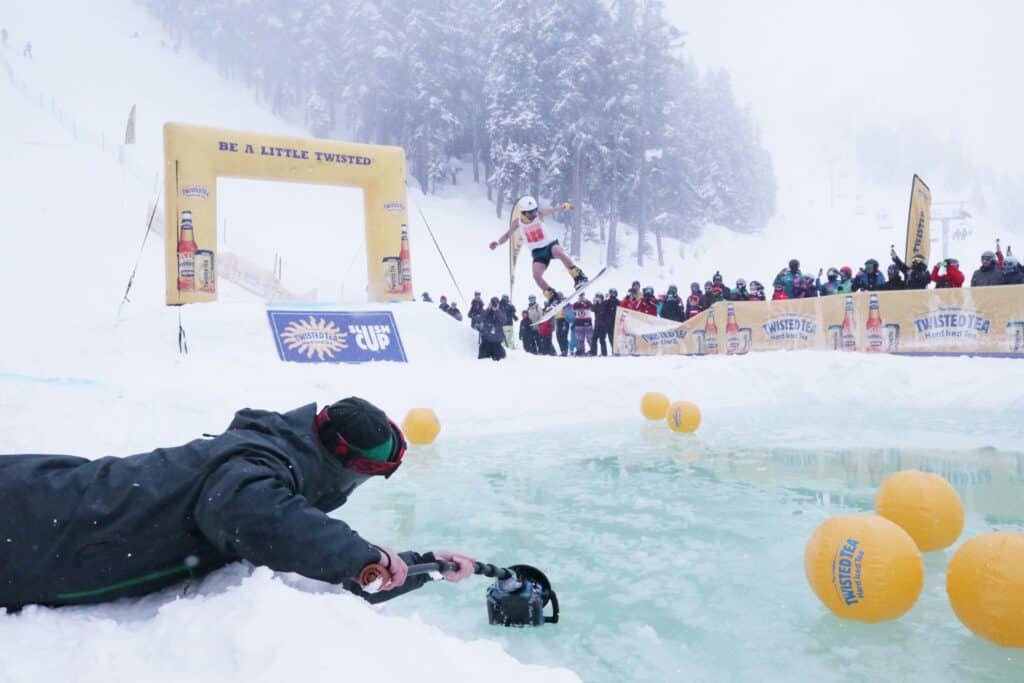A few weeks ago I was photographing the Slush Cup event in Whistler for a client and the weather forecast was all over the map in the preceding few days. When working in the mountains, if it’s anything but a high pressure system and bluebird weather then I’ll always be prepared for pretty much anything. You can’t book a job and not deliver the goods because the weather was too severe for your equipment, there’s always a photo to be had and a way to get it!
The question is often asked, “what makes a professional photographer?” or “what makes a photographer professional?”. There’s no simple answer to this, but one thing I know for certain is that it’s not, contrary to popular belief, simply based upon their skill behind the camera. For me, a professional is someone who is prepared, someone who has researched the job they are there to do and someone who will deliver for their client under any circumstances.

For the commercial work I do, a lot of that involves dealing with less than ideal weather so I’ve always paid close attention to protection my gear in those situations. These days I’m using the awesome Aquatech Sport Shield Rain Covers, which were also mentioned in my recent Gear Check post about their eyepieces. These covers are going to keep my cameras going in torrential rain and snowfall, but for this job I also carried an Aquatech Elite water housing for my Canon 5D Mark IV, since I was going to be working close to water and wanted to be able to take a total soaking if it came down to it.
The other thing I packed before the shoot was a selection of ziplock bags and a roll of duct tape. Sometimes you need to solve problems on the fly, and the plastic bag/duct tape combination can do wonderful things when bespoke solutions like the Sports Shields aren’t available. No, duct tape never looks very professional when you wrap it round your gear, but it’s the preparedness that does. Wrapping flashes and Pocketwizards with this combination proved to be crucial by the end of the shooting day.
I’ve written extensively about photographing in extreme weather before, but it’s also worth underlining that YOU, the photographer, are also an important piece of the puzzle. It’s no good if your camera is still working, but you’re a shivering wreck on the verge of pneumonia, so make sure you put as much effort into weather proofing yourself! Your work will suffer if you’re spending your time thinking about how cold and wet you are, instead of concentrating on the job and your creativity.



